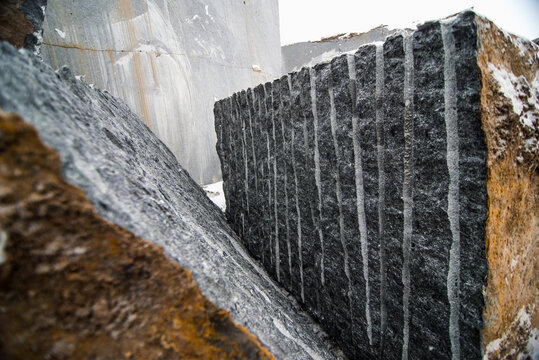The Concealed Treasures: Checking Out Granite Quarries in South Africa
The Concealed Treasures: Checking Out Granite Quarries in South Africa
Blog Article
Uncovering the Rich History and Lasting Practices of Granite Quarrying
As we depend on the precipice of uncovering the intricate tapestry of granite quarrying, a journey through time exposes not just the physical act of extracting rock but additionally the social and historic value woven into the really material of this practice. From the old origins that laid the foundation for contemporary quarrying techniques to the lasting methods that are forming the future of this sector, each chisel mark on granite surface areas tells a story waiting to be discovered (granite quarries in south africa). The legacy of granite quarrying extends much beyond simple extraction; it is a testimony to human resourcefulness, durability, and the long-lasting allure of this magnificent rock
Old Origins of Granite Quarrying
Going back to ancient worlds, the method of quarrying granite has actually been an important part of human history and architectural advancement. The earliest proof of granite quarrying dates back to ancient Egypt, where substantial pyramids and intricate sculptures were crafted from this durable stone. The Egyptians made use of primitive tools to remove granite blocks from quarries, showcasing the value of this product in their significant constructions.
Progressing in history, the Greeks also made considerable payments to the quarrying of granite. The Greeks used granite in different architectural marvels, such as temples and statues, showing their ability in shaping and carving this hardy rock. The Romans additionally refined the techniques of quarrying granite, utilizing sophisticated devices like blades and hammers to essence and form granite for their famous frameworks.
With the centuries, the method of quarrying granite has actually developed, with modern-day innovations boosting effectiveness while keeping the timeless charm of this all-natural stone - granite quarries in south africa. From ancient human beings to modern builders, the legacy of granite quarrying remains to shape our world
Advancement of Quarrying Strategies
The advancement of quarrying strategies has actually been marked by a continuous progression in the direction of greater efficiency and accuracy in removing granite. From the primary approaches utilized by our forefathers to the innovative modern technologies used in modern quarrying procedures, the market has actually undertaken considerable innovations. Early quarrying methods involved hand-operated labor with fundamental tools such as knives, hammers, and wedges to draw out granite blocks from the earth. As human beings advanced, strategies like fire-setting and primitive dynamites were presented to help with the extraction process.
Developments in computer-controlled devices and 3D modeling have actually optimized quarrying operations, leading to minimal ecological impact and improved sustainability methods. As the need for granite proceeds to rise, the development of quarrying strategies continues to be integral to meeting industry requires successfully and sustainably.
Cultural Relevance of Granite
Granite holds a profound social relevance across numerous people due to its enduring visibility in building masterpieces and revered monoliths. The cultural significance of granite prolongs beyond its physical features; it symbolizes resilience, security, and timelessness, making it a symbol of withstanding traditions and practices.

Lasting Practices in Quarrying
Among the abundant background of granite quarrying and its cultural significance lies a growing emphasis on lasting techniques within the market. As environmental understanding and worries concerning source deficiency have actually increased around the world, the quarrying field has actually significantly accepted sustainable techniques to reduce its impact on the setting and bordering neighborhoods.

In addition, reclamation and my site rehabilitation of quarry sites post-extraction are integral to sustainable techniques. By restoring quarried areas to an all-natural or advantageous state, such as creating wild animals environments or leisure spaces, quarriers can offset the environmental footprint of their procedures and add favorably to the neighborhood community.
Heritage of Granite Quarrying
With a historic background soaked in craftsmanship and industrial progress, what sustaining effect has granite quarrying left on the landscape of contemporary culture? The legacy of granite quarrying transcends plain extraction practices; it has formed architectural wonders, metropolitan landscapes, and cultural heritage worldwide. The resilient nature of granite has made it a recommended choice for monuments, structures, and framework, standing as a testament to the skill and artistry of quarry workers across generations.
Furthermore, the economic impact of granite quarrying can not be ignored. The market remains to provide work chances and drive regional economies in areas where granite extraction is prevalent. It has likewise spurred technical developments in quarrying techniques and devices, resulting in more effective and sustainable methods.
In terms of sustainability, the tradition of granite quarrying consists of efforts to alleviate ecological impacts with recovery projects and responsible source monitoring. By balancing economic rate of interests with ecological stewardship, the industry aims to ensure that future Visit This Link generations can remain to gain from this enduring natural deposit.
Conclusion

Report this page